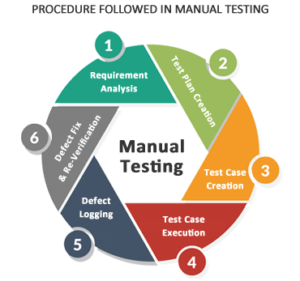Introduction:
Quality assurance, particularly testing, is as vital as any other phase in the software development life cycle. It involves testing computer software against specified requirements to ensure quality and functionality. Regardless of how well-designed an application is, defects are inevitable and must be addressed before customers encounter operational issues. Here is the need to improve the manual testing process to solve these issues.
In this discussion, we will focus on manual testing and explore ways to answer how to improve the manual testing process. Our goal is to identify methods that can facilitate and advance manual testing, integrating it effectively into the development workflow. With Siznam, understanding how to improve manual testing processes, organizations can enhance product quality and ensure a smooth user experience. To begin with, it is necessary to describe the manual software testing methodology.
What is Manual Testing?
“Manual testing is the way of carrying out qualitative testing through a testing professional, coordinator or analyst in order to detect the various problems or faults in a particular software before it is used by the various end users.”

Manual testing is done this way because the name implies that no scripts or any form of tool supports the activity. It remains an important process in software development as it aids in the identification of defects, prevention of defects, and verification of the compliance to the requirements.
Advantages of Manual Testing:
Manual testing offers several benefits, making it an essential part of the software development process. Here are some key advantages:
- Flexibility and Adaptability: Quickly adjust to changes without reprogramming.
- Human Insight: Leverages testers’ intuition to catch subtle issues.
- Exploratory Testing: Discover defects in new or complex features.
- UI/UX Validation: Ensure visual correctness and ease of use.
- Cost-Effective: Suitable for small projects with limited budgets.
- Non-Automatable Scenarios: Handle complex user interactions.
- Immediate Feedback: Quick identification and resolution of issues.
- Real-World Testing: Simulate various conditions and user behaviors.
- Accessibility: Requires less technical skill, enabling diverse tester backgrounds.
- User Experience Focus: Identify and improve usability and accessibility issues.
Why Is Manual Testing Important?
Manual testing is important because it lets people test software like real users would. It’s flexible, so testers can easily adjust to changes and find problems that might be missed by automated tools. It’s also cost-effective for smaller projects and great for checking how easy the software is to use. Manual testing can uncover issues that might not show up with automated testing, ensuring the software works well and meets user needs.
How to Improve the Manual Testing Process?
To optimize the effectiveness of manual testing, it is essential to continuously improve and enhance the procedures involved. In this guide, we will explore various manual testing best practices. By focusing on manual testing techniques, you can increase efficiency and overall effectiveness. Implementing manual testing strategies will help you deliver a high-quality product to your users.
Below are some ways for enhancing manual testing techniques:
1. Enhance Your Focus to Improve Testing Outcomes:
To enhance manual testing efficiency, the first step for manual testers is to sharpen their focus. This involves exploring new tools or techniques that could enhance the testing process. By applying manual testing tips and integrating innovative approaches, you can achieve better results.
2. Master Project Requirements for Better Testing:
Once you have a clear focus, the next crucial step is to fully understand the project requirements. A thorough grasp of these requirements provides valuable insights and helps tailor manual testing strategies. This ensures alignment with project goals. It also contributes to effective manual testing process improvement.
3. Set Clear Goals and Pursue Learning Opportunities
Setting specific goals and interests is another important activity in the best manual testing methods. Testers should challenge themselves with objectives, such as identifying a certain number of defects or exploring unexpected results. Expanding knowledge about the product life cycle, documentation, and manual testing improvement tips can enhance the manual skills. The setting of goals and pursuing learning opportunities can add value to manual testing process optimization.
4. Document and Analyze Data for Enhanced Testing:
For manual testing process improvement, effective documentation and analysis of data are crucial. Testers should consistently record relevant test cases and issues. This habit results in more detailed reports and helps in collecting dynamic data. By following effective manual testing practices, you can gain deeper insights into bugs.
5. Manage Repetitive Tasks and Avoid Saturation:
Maintaining focus during repetitive tasks can be challenging, often leading to a saturation point. To overcome this, testers should implement strategies such as taking regular breaks or reviewing past work. These effective manual testing practices help prevent burnout, maintain a fresh perspective, and improve manual testing efficiency.
6. Leverage Pattern Recognition and Networking:
Utilizing pattern recognition can enhance testing by identifying recurring issues through comparison of similar code segments. Additionally, engaging in networking opportunities like seminars and conferences can provide new insights and techniques. Learning from peers and adopting best manual testing methods can lead to more effective testing.
7. Acquire Basic Coding Skills to Improve Testing:
While the primary focus for testers is on testing, having a basic understanding of coding and programming is highly beneficial. Familiarity with development processes allows testers to quickly address and understand bugs, enhancing manual testing techniques. This also improves collaboration with development teams for faster problem resolution.
8. Embrace Continuous Improvement and Feedback:
To stay relevant and effective, testers should embrace a culture of continuous improvement and actively seek feedback. Regularly reviewing and refining testing processes based on feedback helps in identifying areas for improvement and implementing manual testing improvement tips.
9. Prioritize Effective Communication with the Team:
Effective communication with development and QA teams is essential for successful manual testing. Clear and timely communication helps in understanding requirements, discussing issues, and coordinating efforts. It ensures alignment and enhances overall manual testing strategies.
Improving manual testing ensures it remains relevant, effective, and efficient, aligning with business objectives and the latest technologies. By enhancing manual testing techniques you can ensure that the testing is thorough and accurate. This ongoing manual testing process improvement helps maintain a competitive edge and guarantees the delivery of a reliable and well-tested product.
With these manual testing tips you can improve the performance of your software.
Advantages Of Improving Manual Testing:

- Boosts Software Quality
Improved manual testing ensures thorough examination, enhancing manual testing efficiency and product quality. - Increases Flexibility
Enhances adaptability to changing requirements, aligning with business goals and new technologies. - Identifies Usability Issues
Effective in uncovering user experience problems, leading to better manual testing practices and higher customer satisfaction. - Provides Insightful Feedback
Offers valuable feedback on design and functionality, contributing to manual testing process optimization. - Cost-Effective for Smaller Projects
More economical than automation for small or rapidly changing projects, focusing on manual testing best practices. - Enhances Test Coverage
Covers complex scenarios and critical functionalities, improving overall testing quality. Optimizing manual testing makes your testing process better so it works faster and finds more issues. - Strengthens Team Collaboration
Fosters teamwork and shared insights, enhancing the overall testing process. - Supports Continuous Improvement
Optimizing manual testing helps with continuous improvement by making your testing process more efficient and effective. This means you can quickly spot and fix issues, learn from past tests, and make ongoing adjustments to improve software quality over time.
Conclusion:
In conclusion, improving the manual testing process is key to producing high-quality software. By learning how to improve manual testing process, you can make your testing more effective and efficient. Each step helps make your testing more thorough and reliable.This involves refining manual testing techniques, setting clear goals, and using real-world insights. For more tips on optimizing your manual testing, check out our blog on Siznam. Siznam offers an easy-to-use platform with excellent support and features to help you manage and improve your testing process.






